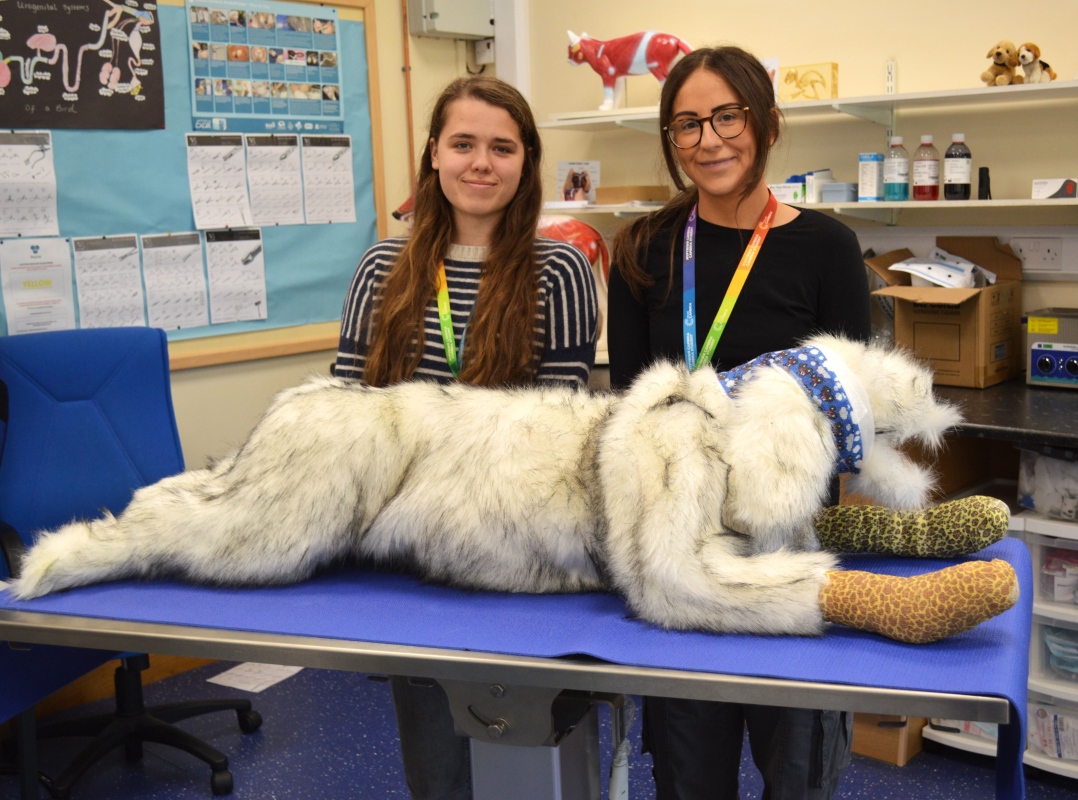Advanced carpentry and joinery

KSBs
Knowledge
K1: The principles of environment, health, safety and welfare and how they must be applied in relation to their work and to others. eg electrical safety, storage of materials, accident & emergency procedures Back to Duty
K2: The responsibilities under current legislation and official guidance to undertake the work e.g. Control of Substances Hazardous to Health, Manual Handling and Working at Height Regulations, Fire Door legislation Back to Duty
K3: How to use health and safety control equipment including personal protective equipment (PPE), respiratory protective equipment (RPE), local exhaust ventilation (LEV) Back to Duty
K4: The different workplace signs and safety notices and their meaning, how to undertake hazard identification in the workplace and the procedures for the identification and removal of hazardous waste Back to Duty
K5: The principles of building construction including foundations, roofs, walls, floors, utilities and services, BIM and environmental and sustainability considerations Back to Duty
K6: How to interpret and produce relevant information from drawings, specifications and work instructions including the basic principles of Computer Aided Design (CAD) and Builiding Information Modelling (BIM) Back to Duty
K7: How to estimate resource quantities to carry out work eg quantity of fixings, length of timber. Back to Duty
K8: How to communicate and work with others effectively in the workplace Back to Duty
K9: The characteristics, quality, uses, sustainability, limitations and defects associated with timber and timber-based products and components, such as hardwood, softwood, MDF and other materials. The different energy efficiency and sustainable materials for construction Back to Duty
K10: Hand Tools : how to prepare, use, maintain and store hand tools including tool limitations and sharpening techniques e.g chisels, planes, hand saws, hammers Back to Duty
K11: Power Tools: how to prepare, use, maintain and store power tools including the procedure for undertaking visual first use check eg multi-functional tool, portable circular saws, drills, saws, planers, routers, sanders and nail guns. How to produce jigs. Back to Duty
K12: How to plan work activities for self and others in order to meet schedules and deadlines. Back to Duty
K13: Advanced Site Carpenter (ASC) : the different types of fixings and fasteners for site carpentry work including their uses Back to Duty
K14: ASC: how to form advanced woodworking joints including the resources required and how to mark out and form advanced woodworking joints. How to form products using advanced woodworking joints including splayed and level (horizontal and vertical) joints Back to Duty
K15: ASC: how to carry out complex first fixing work including how to install complex and non-standard timber frames, linings, floor coverings, flat roof decking, flights of stairs with turns and handrails and how to erect timber stud partitions. Back to Duty
K16: ASC: how to carry out complex second fixing work including how to install service encasements, cladding, bespoke wall and floor units and fitments, side hung doors, ironmongery, timber mouldings, handrails and spindles to stairs with turns Back to Duty
K17: ASC: how to carry out complex structural carcassing work including how to erect trussed rafter, how to fix verge and eave components, how to install floor joists, how to fit and fix joist coverings, how to form dormer windows to roofs and how to construct traditional cut roofs with hips and valleys Back to Duty
K18: ASC: how to install and maintain structural and non-structural carpentry components including how to install and maintain doors, windows and structural timbers, how to replace glazing, how to reinstate surfaces Back to Duty
K19: Advanced Architectural Joiner (AAJ): the characteristics, quality, uses and limitations of relevant materials including timber, glass, laminates, finishing’s (paint, stains, lacquers). The different defects associated with relevant raw materials, the different types of ironmongery products associated with architectural joinery including locks, handles etc Back to Duty
K20: AAJ: component performance requirements including the U-value and security requirements for doors and windows in accordance with current building and CE marking regulations, the requirements for fire doors in accordance with current building regulations, the requirements for stairs in accordance with current building regulations Back to Duty
K21: AAJ: advanced architectural joinery technology including the purpose and capabilities of software programmes used for architectural joinery work, how to use CAD to produce drawings and the process for programming, setting up and operating Computer Numerically Controlled (CNC) machinery. Back to Duty
K22: AAJ: how to form shaped woodworking joints including the resources required to mark out and form shaped woodworking joints, how to mark out woodworking joints for shaped work, how to form products using shaped woodworking joints Back to Duty
K23: AAJ: how to set out and mark out for shaped joinery products including how to interpret information for producing shaped joinery product details and how to prepare Back to Duty
K24: AAJ: how to manufacture and repair shaped joinery products including how to interpret information related to the manufacture of shaped joinery products, how to prepare for the manufacture of shaped joinery, how to manufacture, assemble and finish shaped doors and frames, how to manufacture, assemble and finish straight stairs with turns Back to Duty
K25: AAJ: how to take site measurements and site fix joinery products including doors, frames and windows and straight stairs with turns Back to Duty
K26: AAJ: how to prepare and use fixed machinery to create shaped work including how to prepare and check prior to use, how to maintain and how to develop and specialist jigs for to manufacture curved joinery products. How to use, including the uses and limitations of narrow bandsaws, crosscut saws, re-saws, surface planers, thicknessers, morticers, spindle moulders and single end tenoners. Back to Duty
Skills
S1: Apply safe working practices in accordance with current legislation, health, safety and welfare regulations, approved Codes of Practice, company guidance, site specific requirements and taking account of changing circumstances. Apply safe working techniques when manual handling, working at height and using access equipment and plant such as – fall prevention systems e.g. fall arrest, restraint and access systems, harnesses and scaffold. Back to Duty
S2: Apply safe use, storage and maintenance of hand tools, power tools and equipment including the use of PPE, LEV and RPE. Back to Duty
S3: Interpret relevant information from drawings, specifications and work instructions. Back to Duty
S4: Estimate resource quantities to carry out work taking site measurements where appropriate eg quantity of fixings, length of timber. Back to Duty
S5: Plan and undertake work practices productively. Back to Duty
S6: Carry out a range of carpentry and joinery skills including measuring, marking out, fitting, cutting, splicing, mitring, scribing, horizontal and vertical levelling (including laser levelling), finishing, positioning and securing. Back to Duty
S7: Mark out and form advanced woodworking joints including splayed and plumb joints Back to Duty
S8: ASC: carry out first fixing work including install complex and non-standard timber frames, linings, coverings, flat roof decking, non-structural stud partitions and flights of stairs with turns. Back to Duty
S9: ASC: carry out second fixing work including service encasements, cladding, bespoke wall and floor units, tops, cornices and fitments, complex spindles and handrails to stairs with turns, side hung doors, ironmongery, timber mouldings, fire doors and door sets. Back to Duty
S10: ASC : carry out complex structural timber stud partition work. Back to Duty
S11: ASC: Erect complex trussed rafter roofs and bracings, verge and eave components, dormer windows to roofs. Back to Duty
S12: ASC: Erect complex traditional roofs with trusses, purling, ridges, hips and valleys Back to Duty
S13: ASC: Install floor joists including cut to fit, solid timber and coverings including planed, tongued and grooved (PTG) boards Back to Duty
S14: ASC: maintain structural and non-structural carpentry work including doors, windows and structural timbers, replace glazing, reinstate surfaces, timber doors, window frames, mouldings, guttering and fixings and replace sash window cords Back to Duty
S15: AAJ:set out, mark out and form products using shaped woodworking joints Back to Duty
S16: AAJ: manufacture, assemble, finish and repair shaped doors, fire doors, frames and straight stairs with turns Back to Duty
S17: AAJ: site fix joinery products including doors, fire doors, frames and windows Back to Duty
S18: AAJ: produce CAD drawings. Prepare and use fixed machinery to create shaped work including inspect and maintain the fixed machinery, develop specialist jigs to manufacture curved joinery products, use a narrow bandsaw, crosscut saw, re-saw, surface planer, thicknesser, morticer, spindle moulder, single end tenoner Back to Duty
Behaviours
B1: Effective communication: oral, written, listening – especially in working with others Back to Duty
B2: Team work: work effectively without supervision and give leadership to others – being willing to lead a team. Back to Duty
B3: Independent working: take responsibility for completing own work and monitoring the work of others. Back to Duty
B4: Logical thinking: use clear and valid reasoning when making decisions and in achieving work targets of self and others. Back to Duty
B5: Working effectively: undertake the work in a reliable and productive manner, lead others by example. Back to Duty
B6: Time management: use own time effectively to complete work on schedule and support effective team working. Back to Duty
B7: Adaptability: be able to implement change and adjust existing requirements to meet the work instructions. Back to Duty











Responses